Most modern garage door systems come equipped with safety features that include sensors. These sensors are designed to prevent the garage door from closing on anyone or anything that is in its path, making them an essential component of a safe and functional garage door.
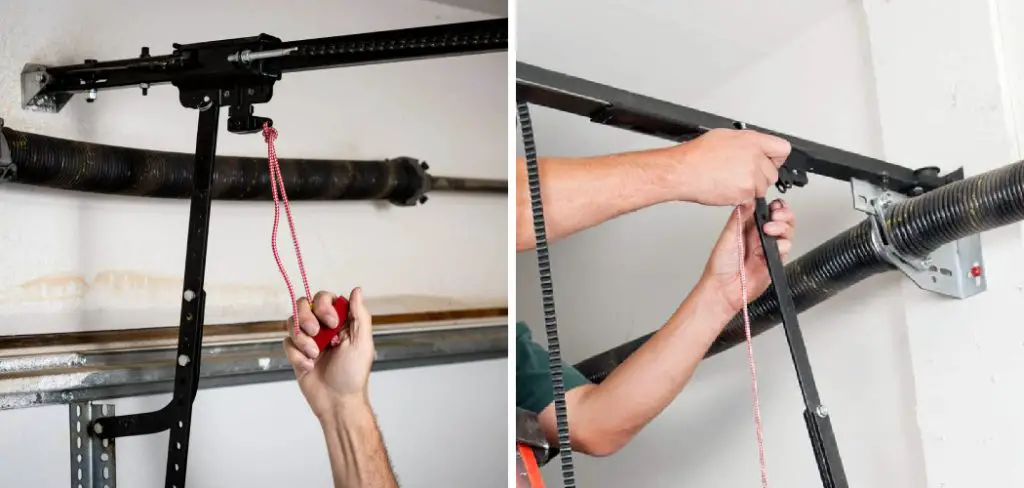
However, there may be instances where you need to reconnect your garage door sensors, whether it’s due to a malfunction or because they were accidentally disconnected. In this guide, we will walk you through the steps on how to reconnect garage door.
Necessary Items
Before you begin, make sure you have the following items on hand:
- Step ladder or stool
- Screwdriver (flathead or Phillips)
- Electrical tape (optional)
- Safety glasses (recommended)
12 Steps on How to Reconnect Garage Door
Step 1: Locate the Sensors
The first step is to locate where the sensors are installed. Typically, these sensors are located near the bottom of the garage door tracks, facing each other. They are usually a few inches off the ground and will have a small LED indicator light on them.
Step 2: Check the LED Lights
Take a look at the LED lights on each sensor. If both sensors have a solid green light, then they are properly connected and do not need to be reconnected. However, if one or both of the sensors have a blinking or no light at all, this indicates that they are not connected.
Step 3: Check the Wiring
If the LED lights indicate that the sensors are not connected, the next step is to check the wiring. Make sure that the wires connecting each sensor to its respective terminal on the motor unit are securely attached and not damaged.
Step 4: Tighten Screws
Using a screwdriver, make sure that the screws holding the wires in place are tight. Loose connections can cause sensors to malfunction. As a safety precaution, it is recommended to wear safety glasses while working on your garage door.
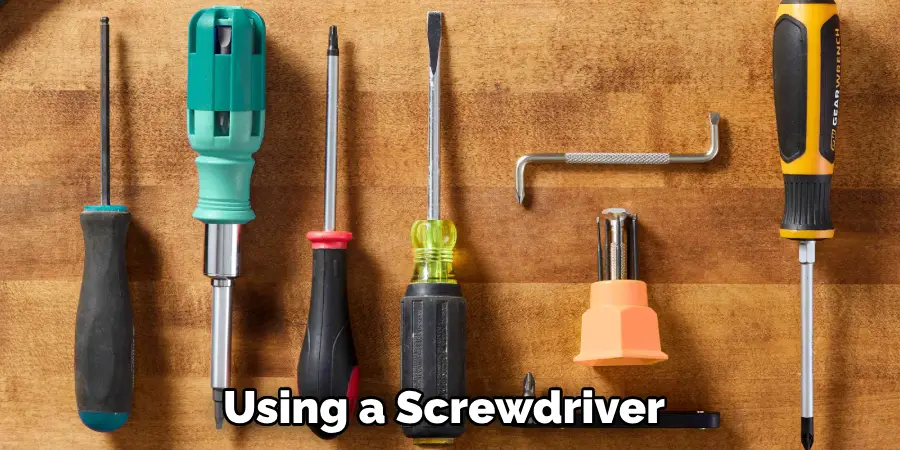
Step 5: Adjust the Sensors
If the wiring is secure and the LED lights are still not solid green, you may need to adjust the sensors. They should be facing each other directly and have a clear line of sight. Use a step ladder or stool to reach the sensors if they are too high for you to adjust.
Step 6: Clean the Sensors
Dirt and debris can also interfere with the sensors’ connection. Use a soft cloth to gently clean the lenses of each sensor. Avoid using harsh chemicals or abrasive materials that could damage the sensors.
Step 7: Check for Obstructions
Make sure there are no obstructions blocking the sensors’ line of sight. Common obstructions include leaves, spiderwebs, or other debris. So, make sure the area around the sensors is clear. And if there are any objects in the way, remove them.
Step 8: Test the Sensors
After completing all previous steps, it’s time to test the sensors. Close the garage door and see if it stops before hitting an object in its path. If it does, then your sensors are working correctly. Even if the sensors are working correctly, it’s always a good idea to test them periodically to ensure they continue to function properly.
Step 9: Disconnect the Power
Before making any adjustments or repairs, always disconnect the power to your garage door opener. This will prevent any potential accidents from occurring. While working on your garage door, always assume that it could close unexpectedly.
Step 10: Reconnect the Sensors
If the sensors are disconnected, you will need to reconnect them. Follow the same steps as above, making sure that all wiring is secure and the LED lights indicate that they are properly connected. Also, don’t forget to remove the power source before reconnecting the sensors.
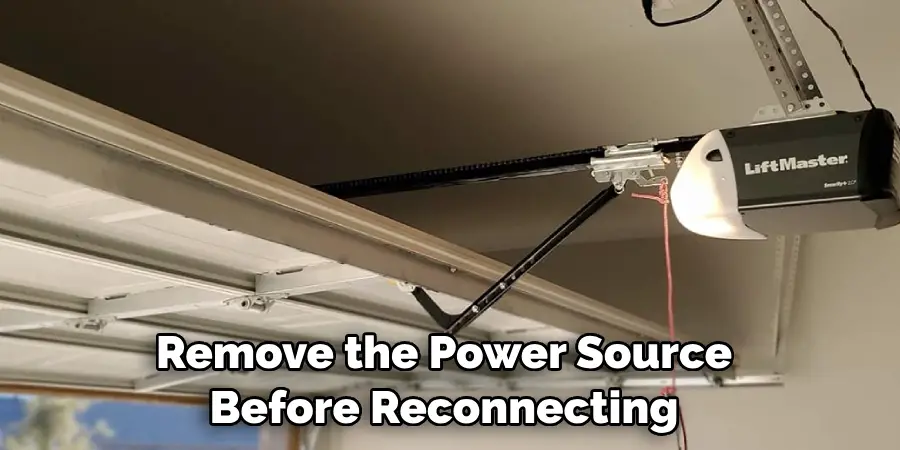
Step 11: Use Electrical Tape (optional)
To ensure that the wires stay securely in place and do not become disconnected again, you may want to use electrical tape to secure them. This is an optional step but can provide added protection against loose connections.
Step 12: Test Again
Finally, test the sensors one more time to make sure they are working correctly. If they are, then you have successfully reconnected your garage door sensors.
In conclusion, reconnecting garage door sensors is a simple process that can be done by following these 12 steps. Regularly checking and maintaining your garage door sensors is essential for your safety and that of your family.
If you encounter any issues or difficulties while reconnecting your sensors, it is always best to consult a professional for assistance. By properly maintaining and repairing your garage door sensors, you can ensure that your garage door continues to function safely and efficiently for years to come. So, make sure to check them regularly and keep them in good working condition.
9 Safety Measures to Follow When Working on Garage Door
1) Always Disconnect the Power
As mentioned earlier, before working on your garage door sensors, always disconnect the power to your garage door opener. This will prevent any accidents from occurring. And even after disconnecting the power, always proceed with caution.
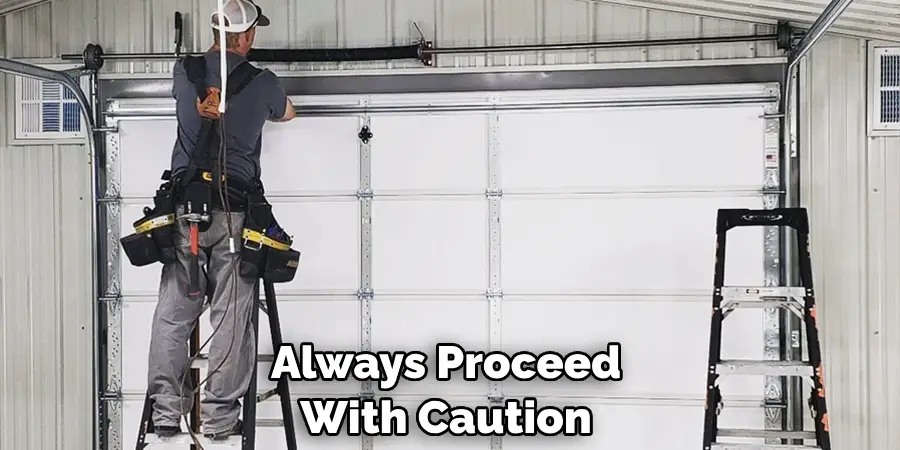
2) Wear Safety Gear
While working on your garage door sensors, it is recommended to wear safety glasses to protect your eyes. Additionally, you may also want to wear gloves and closed-toe shoes for added protection.
3) Use a Sturdy Ladder or Stool
When adjusting or cleaning your sensors, using a sturdy ladder or stool is crucial for your safety. Make sure it is placed on a flat and stable surface before climbing up. With a proper ladder or stool, you can avoid any falls or accidents.
4) Keep Children and Pets Away
It is important to keep children and pets away from your garage door while working on the sensors. They may not understand the potential dangers involved and could accidentally get in harm’s way. If possible, make sure to have someone else supervise them while you work.
5) Follow Instructions Carefully
Whether you are reconnecting or adjusting your sensors, always follow the instructions provided by the manufacturer. This will ensure that you properly handle and fix any issues with your garage door sensors.
6) Use Proper Tools
Using proper tools such as a screwdriver or pliers is important for the success and safety of your work. Make sure you have the correct tools before beginning any repairs or adjustments on your garage door sensors.
7) Be Mindful of Loose Parts
As you work on your sensors, it’s essential to keep track of any loose parts, such as screws, wires, or brackets. These can pose a safety hazard if they fall or get lost. So, make sure to have a small container nearby to keep these parts organized.
8) Do Not Attempt Major Repairs
If your garage door sensors require major repairs, it is best to leave it to a professional. Attempting complex repairs without the proper knowledge and experience can be dangerous and may cause further damage. It is always better to be safe than sorry.
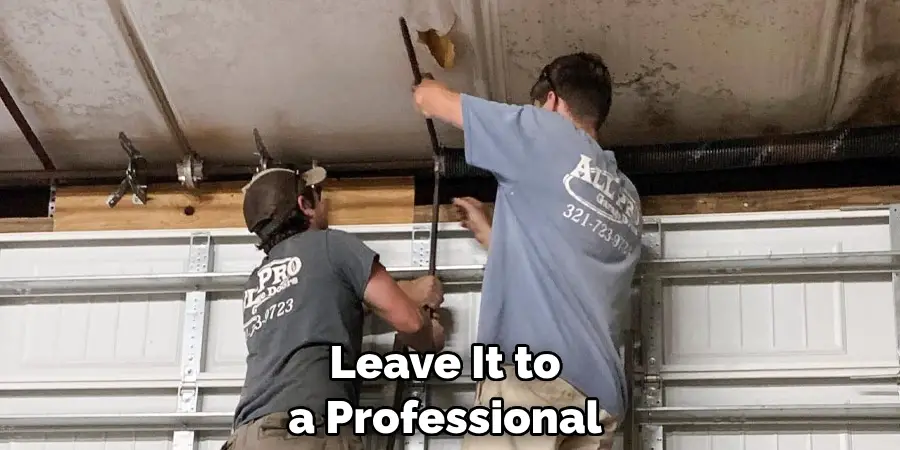
9) Regularly Inspect and Maintain
Lastly, to ensure the safety of your garage door sensors, it is important to regularly inspect and maintain them. This will help identify any potential issues before they become major problems and keep your sensors in good working condition. Make it a habit to check them periodically for any dirt, debris, or damage. And don’t hesitate to call a professional if you notice any problems that you are not equipped to handle.
By following these safety measures on how to reconnect garage door, you can ensure your own safety and the proper functioning of your garage door sensors. Always prioritize safety when working on any home maintenance tasks.
8 Things to Avoid when Working on Garage Door
1) Touching the Sensitive Parts
Garage door sensors have sensitive parts that can be easily damaged if touched or handled improperly. So, it is important to avoid touching any of the internal components unless necessary. So, be cautious and handle them with care.
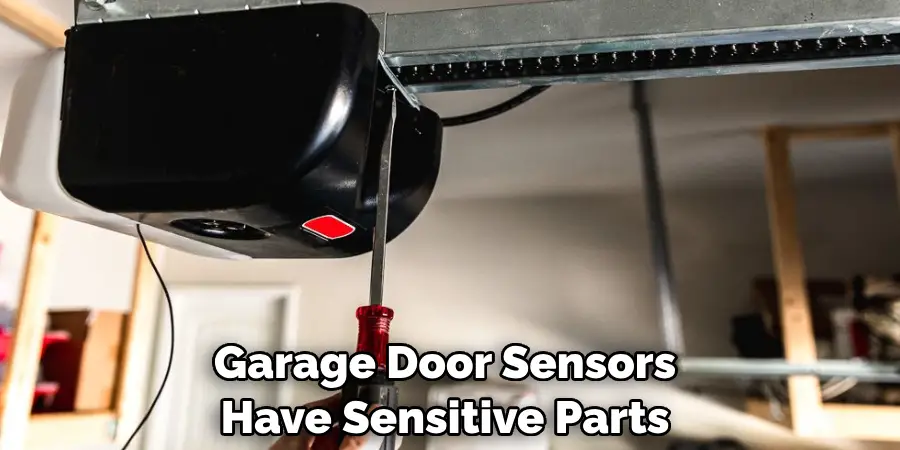
2) Using Harsh Chemicals
Avoid using harsh chemicals or cleaners when cleaning your sensors. These can damage the sensors’ delicate surfaces and affect their functioning. Instead, use a mild soap and water solution to clean them gently.
3) Ignoring Safety Precautions
Never ignore safety precautions, such as disconnecting the power and using safety gear, when working on your garage door sensors. Taking shortcuts or disregarding safety measures can lead to accidents and injuries.
4) Improperly Aligning Sensors
When aligning your sensors, make sure they are properly aligned according to the manufacturer’s instructions. Improper alignment can cause malfunctions and affect the performance of your garage door.
5) Over-tightening Screws
When reattaching any screws or brackets on your sensors, make sure not to over-tighten them. This can damage the sensors and affect their functionality. Follow the manufacturer’s instructions for proper tightening techniques.
6) Not Calling a Professional for Major Repairs
As mentioned earlier, it is important to call a professional for major repairs. Trying to fix complex issues on your own can be dangerous and may cause further damage. Leave it to the experts who have the knowledge and experience to handle these repairs safely.
7) Ignoring Warning Signs
If you notice any warning signs, such as blinking lights or unusual noises coming from your garage door sensors, do not ignore them. These could be indicators of a larger problem that requires immediate attention from a professional.
8) Neglecting Regular Maintenance
Regularly maintaining your garage door sensors is crucial for their proper functioning and longevity. Neglecting maintenance can lead to more significant issues down the line, which may require costly repairs or replacements. Make sure to set aside time for regular inspections and maintenance tasks to avoid such problems.
Garage door sensors are an essential part of your garage door safety system. It is important to handle them with care and follow safety measures when working on them. By avoiding common mistakes and regularly maintaining them, you can ensure their proper functioning and prolong their lifespan.
If you encounter any major issues, it is best to call a professional for assistance to ensure your safety and that of your home. Let’s prioritize safety when it comes to maintaining our garage door sensors.
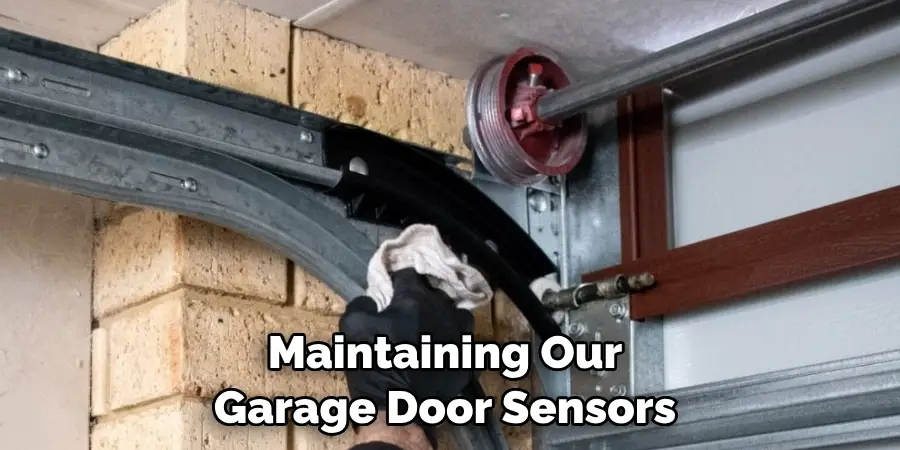
8 Additional Tips for Garage Door Safety
1) Teach Children about Garage Door Safety
It is important to educate children on the potential dangers associated with garage doors, including the sensors. Make sure to discuss safety measures and rules with them, such as not playing near the door or pressing buttons without supervision.
2) Test Your Sensors Regularly
To make sure your sensors are functioning properly, you should test them regularly. This can help identify any issues early on and prevent accidents or malfunctions. So, set a reminder to test them at least once every few months.
3) Keep Sensors Clear of Debris
Make sure the area around your sensors is free from any debris or obstructions. This can affect their performance and cause false readings. So, keep the area clean to ensure accurate functioning. Even small objects like spider webs can interfere with the sensors, so it’s best to keep them clean.
4) Check for Loose Wires
Inspect your sensors for any loose wires or connections. These can cause malfunctions and affect the proper functioning of your garage door. If you notice any issues, make sure to call a professional for assistance.
5) Use Proper Lighting
Garage door sensors rely on proper lighting to function correctly. Make sure to have adequate lighting in your garage, especially near the sensors, to avoid any false readings. If needed, you can also install additional lighting to ensure proper functioning.
6) Keep Your Sensors Protected
Extreme weather conditions or exposure to direct sunlight can damage your sensors over time. Consider installing a protective cover to shield them from these elements and prolong their lifespan.
7) Read the Manual
Before attempting any maintenance or repairs, make sure to read the manufacturer’s manual for your garage door sensors. This will provide you with important safety information and proper handling instructions.
8) Follow Safety Guidelines
Lastly, always follow safety guidelines when working on your garage door sensors. This includes disconnecting power, using safety gear, and following proper handling techniques. Don’t take any risks when it comes to your safety and the safety of others. Remember, prevention is always better than dealing with accidents or costly repairs later on.
Let’s prioritize safety when working on our garage door sensors to ensure a smooth and accident-free experience. So, use these tips on how to reconnect garage door to maintain your garage door sensors and keep them functioning properly for years to come. Keep safety in mind at all times, and don’t hesitate to call a professional if needed.
Frequently Asked Questions about Garage Door
Can I Clean My Garage Door Sensors With Any Cleaning Solution?
To clean your sensors, use a mild soap and water solution. Avoid using harsh chemicals or abrasive cleaners, as they can damage the sensors’ delicate surfaces.
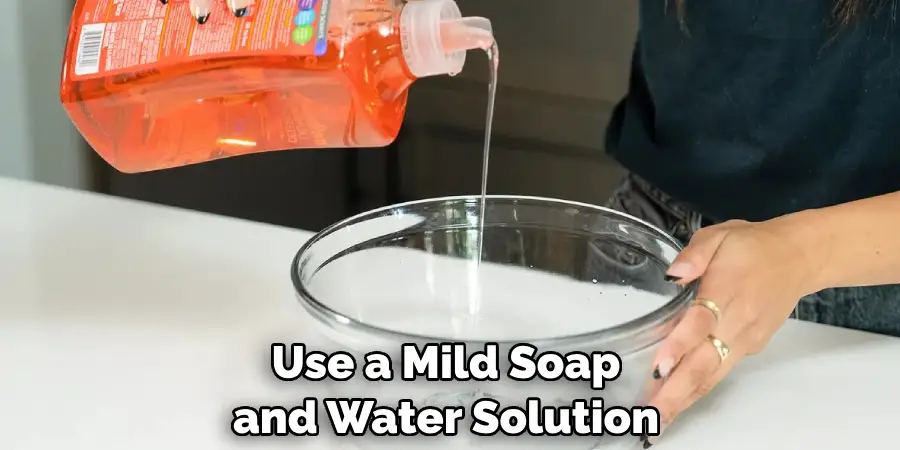
How Often Should I Test My Sensors?
It is recommended that you test your sensors at least once every few months. This will help identify any issues early on and ensure their proper functioning.
Can I Fix Minor Issues with My Garage Door Sensors on My Own?
It is best to leave any repairs or maintenance tasks to a professional, especially when it comes to complex issues. Trying to fix them on your own can be dangerous and may cause further damage to the sensors or garage door system.
What Should I Do If My Sensors Are Not Working Properly?
If you notice any issues with your garage door sensors, such as false readings or malfunctioning, it is best to call a professional for assistance. They have the knowledge and experience to handle these issues safely and efficiently.
So, make sure to contact a reputable and experienced garage door technician for any major repairs or replacements. Keep in mind that safety should always be the top priority when it comes to handling garage door sensors. By following these tips and guidelines, you can ensure their proper functioning and keep yourself and your loved ones safe from any potential accidents.
Conclusion
In conclusion, proper handling and regular maintenance are key to ensuring the safety and longevity of your garage door sensors. By following these tips on how to reconnect garage door, you can avoid common mistakes and keep your sensors functioning properly for years to come.
Remember to prioritize safety at all times and seek professional help if needed. Let’s ensure our garage doors are convenient and safe for everyone in our household.
So, take the time to maintain your garage door sensors and enjoy a hassle-free experience every time you use your garage door. Stay safe! So, remember these tips when maintaining and handling your garage door sensors for a safer and more efficient experience. Let’s prioritize safety at all times to ensure the well-being of ourselves and our loved ones.
